Written by Neil Garratt AM for the Greater London Project.
In the clamour for a greener, car-free London, planners and politicians have long pushed a 'one-size-fits-all' approach to travel. Yet beneath the London-wide averages lies a far more nuanced reality – one that reveals London as not one city, but two distinct halves living different transport lives.
Transport for London's latest report on car ownership trends* tells a compelling story that challenges the prevailing assumptions about how Londoners move around their city.
Most striking is the near-mirrored divide between inner and outer London on car ownership. In inner London, almost two-thirds of households (62%) are car-free, with this percentage largely stable since 2010. Meanwhile, in outer London – where the majority of Londoners live – only a third of households manage without a car, a number also little-changed since 2010 despite more than a decade of campaigning to reduce car use.
Looking at the latest data on how Londoners get to work, the differences become even more pronounced. In outer London, approximately one million people drive to work. That’s more than three times the number driving to work in inner London, in fact it’s more than get to work by rail in inner London. Rail remains the dominant mode across both zones, but the car's role in outer London's transport ecosystem is significant and irreplaceable for many people.
There’s an even wider gap when we consider household composition. The overwhelming majority of one-person households in London are car-free, at 71%. But for a couple with children the picture changes dramatically, as nearly 80% own at least one car and a quarter own multiple vehicles. These aren't casual lifestyle choices; they reflect fundamental realities about how different households tend to function.
It is interesting to reflect on single parent households. There is a 30 percentage point gap in car ownership compared with couples with children. While many adults living alone are happily car-free by choice, can we assume that’s also true for all those single parents? Or would some like to enjoy the convenience of a car but can’t afford it? If so, how might they feel about policies that deliberately raise the cost of owning a car? A tax on the rich, or pulling car ownership even further from their grasp?
The relatively stable average of car-free London households also conceals an intriguing east-west divide that has emerged in the last decade. While the proportion of car-free households has grown in most central and western boroughs, to the east it has fallen. Are policy, demographic, or economic factors at the local level having more influence than the London-wide transport strategy?”
The Mayor’s transport strategy has set ambitious targets to reduce car ownership, which transport campaigners often criticise him for failing to meet. But the evidence suggests he might be swimming against a powerful tide of demographic reality. Despite more than a decade of campaigns to change travel habits, TfL's own data shows that car ownership patterns remain stubbornly aligned with household size, structure, and location.
Furthermore, TfL's data challenges the very notion of a traffic crisis. Their 2024 Travel In London Annual Overview** states: "Despite rising population, road traffic volumes in London have been broadly stable over the last couple of decades." It goes on to note that although traffic levels rebounded from the pandemic faster than public transport, “they also soon levelled out at just below pre-pandemic levels and have been relatively stable since.” The case for more and more car restrictions based on traffic is far from clear-cut.
The reality is that London's transport future requires nuance, not dogma. The car-free ideal works splendidly for single professionals in well-connected areas but seems impractical for larger households and those living in areas where public transport options are more limited.
Transport policy crafted for a non-existent average Londoner is doomed: the mean conceals a multimodal reality. To build a transport system that works for all Londoners, let’s acknowledge these fundamental differences. Outer London families aren't clinging to cars out of stubbornness, they're responding rationally to daily realities. Forcing them out of cars would make their lives worse and harm London's economy, which may explain why the attempt is struggling.
A smarter approach would seek to harness cars' strengths while mitigating their drawbacks, recognising that the persistence of cars in outer London is signalling the value they add. It would similarly recognise that while cycling is less common in outer London, across inner London it’s as much a part of the transport network as cars and buses so needs taking seriously. If we’re not thinking about London transport in this way, we’re not really thinking about it at all.
Community notes:
We are looking forward to seeing lots of you at our first pub meet up on Wednesday. We’ll be doing a few of these informal events over the course of the year, along with the bigger set-piece discussions.
Write for us! We are always looking for more guest contributors. Lots of our recent pieces have been about big policy ideas, but we’d also like more pieces about things which are cool or interesting about London - or things which other cities have which we can learn from. Details about how to get in contact are here.
* “Travel in London 2024 Focus report: Car ownership trends”, Transport for London, December 2024. (https://content.tfl.gov.uk/travel-in-london-2024-car-ownership-trends-acc.pdf)
** “Travel in London 2024 Annual overview”, Transport for London, December 2024. (https://content.tfl.gov.uk/travel-in-london-2024-annual-overview-acc.pdf)



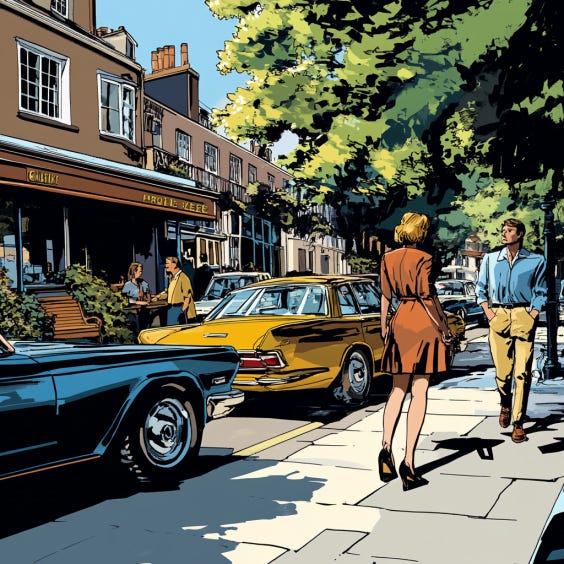
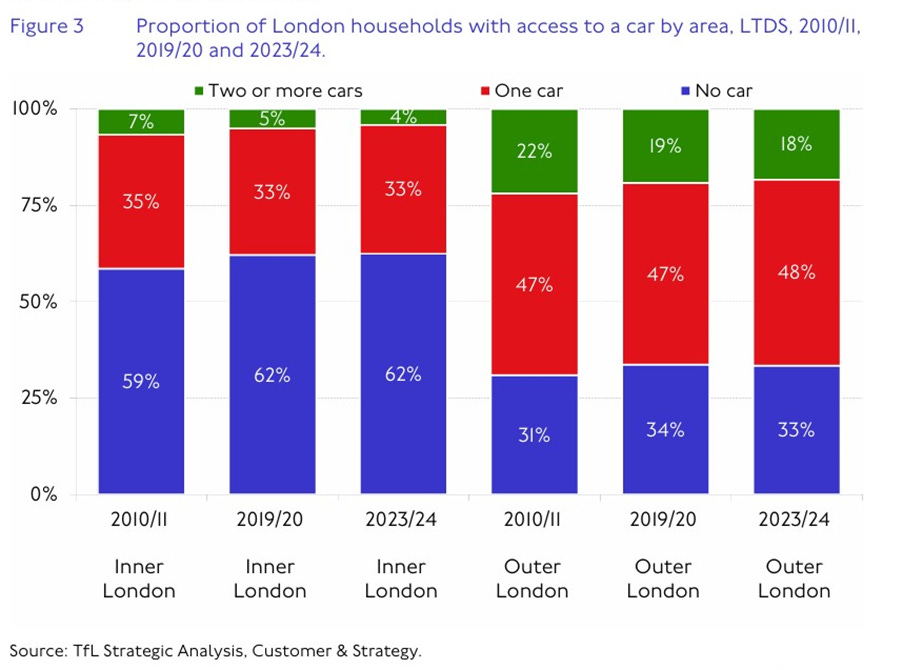
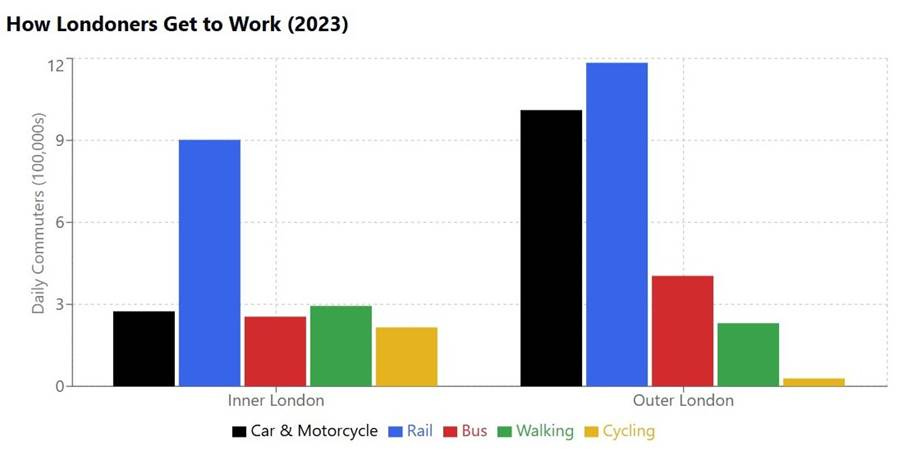
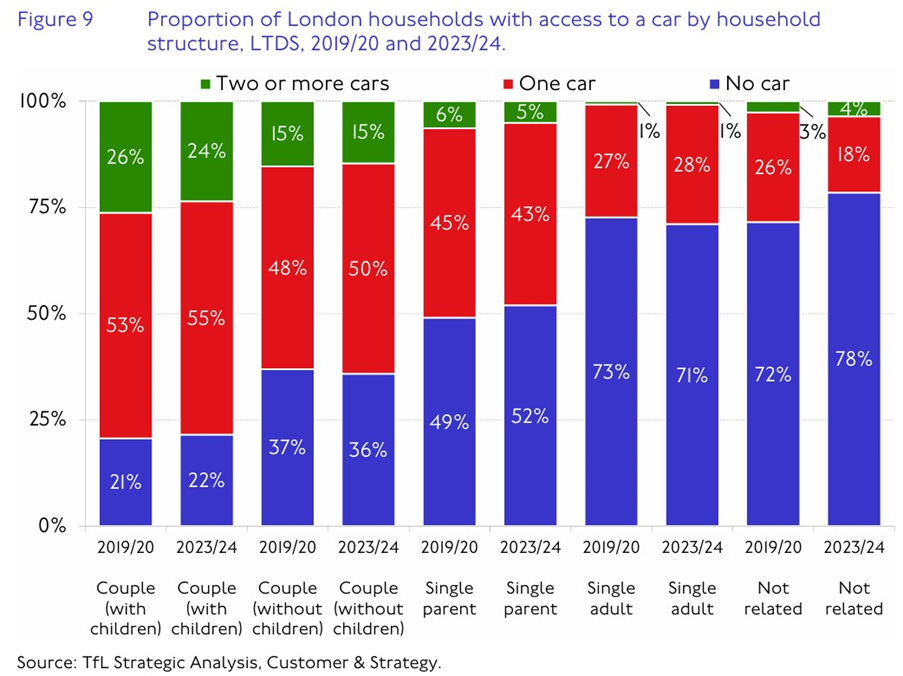
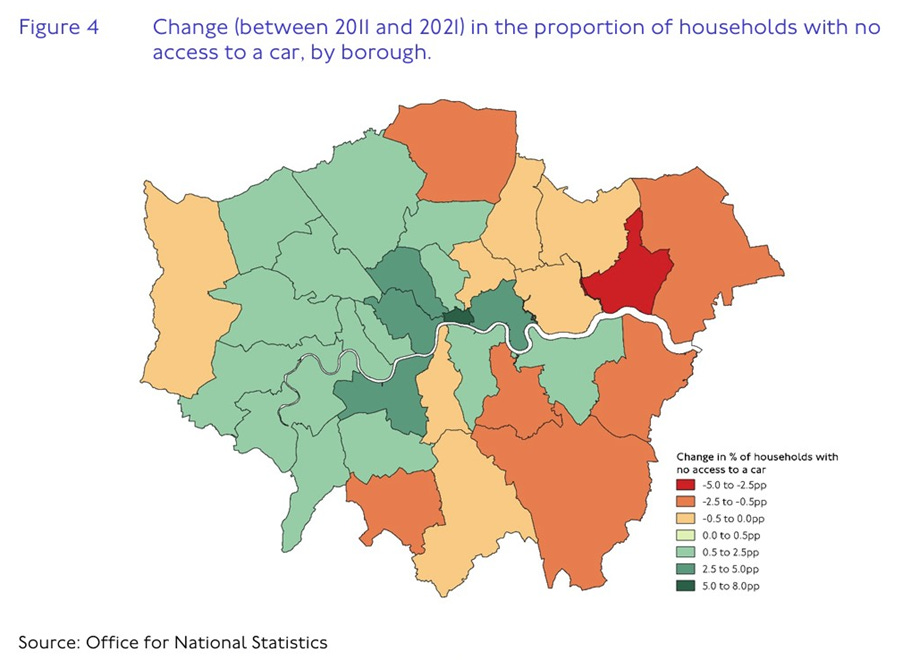
"The car-free ideal... seems impractical for... those living in areas where public transport options are more limited."
Well, sure. IF you don't improve public transport, then people will use cars. IF I don't exercise, I'll get fat. But I CAN exercise, and I SHOULDN'T be fat!
Is it beyond the powers of London's devolved government to improve public transport? Is a London with bad public transport really a "Greater" London? Or can we shake off the tyranny of low expectations and, for once, just build something?
This article makes a massive assumption that households that own a car couldn’t live without one. Many households in London own a car but don’t need it for daily life. This is common in my NW6 neighborhood - only a few cars on our street move on any given weekday. We’re close enough to transit and cycling routes that driving often doesn’t make sense. My family’s car has been in the same spot since March.